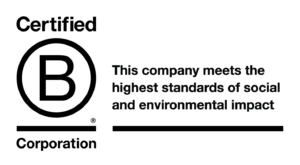There is a massive wave rolling into the contingent labor industry – Direct Sourcing – and every company is in position to start surfing it.
According to the SIA, 62% of enterprise organizations that use contingent workers have either implemented some form of a direct sourcing program, or plan to in the near future.
In our experience, the majority of organizations currently operating direct sourcing programs only target a small subset of potential candidate sources: alumni, new grads, interns, veterans, relocations, and previous shortlists from both contingent and permanent hiring. But what about the rest of the target workforce? An effectively managed direct sourcing program should take advantage of the latest technology to pool candidates from all potential sources so you can truly access the top talent for each role. It feels inevitable that most programs will eventually leverage their employer brand and proactively build talent pools of interested candidates for contract roles.
The question is: what is holding companies back from surfing the direct sourcing wave?
After 15 years in this industry, and having spoken with hundreds of program leaders about next generation recruitment strategies, I believe that a major barrier to the adoption of direct sourcing is the common misbelief that companies should create, implement, and manage their own direct sourcing program. In our experience, only companies that have the following things in place should implement DIY direct sourcing:
-
- Successful use of a Candidate Relationship Management (CRM) tool for permanent hiring (notice I didn’t say ATS);
- A mature TA team with proven ability to source and nurture passive candidates;
- Support from executive leadership for the software spend, hiring/training/managing staff, and implementation costs;
- Relationships with your staffing suppliers that can withstand the potential conflict that a direct sourcing program can create.
- The alignment and close working relationship between the Procurement and Talent Acquisition (TA) teams;
As you can imagine, having all these elements in place is the exception, not the rule. It’s more likely that the contingent program is owned by Procurement, with a degree or two of separation from Talent Acquisition, and there are minimal resources and money to successfully implement a new set of practices and tools. Another barrier to implementation is the status quo. It’s always hard to initiate change. This is why we believe that true direct sourcing will most commonly be fulfilled by an experienced partner who can set up and manage the new program with the least amount of friction.
Here’s how you’ll benefit from having a service provider like Raise manage your direct sourcing program:
-
- A better and unified candidate experience (from recruitment to payroll);
- No process changes with your MSP, VMS, or current staffing supply chain;
- No software or staffing costs, and nothing to implement;
- Pilot test in select areas with the ability to rapidly scale
Raise has designed our Managed Direct Sourcing service to flexibly fit within your existing contingent program with no added cost, no resources, no risk, and no (or minimal) change to your program’s process and tools.
So, how can you get started with Direct Sourcing?
- We would recommend that you don’t go all the way, right away. Start by asking your staffing suppliers what experience they have managing a direct sourcing program. There are only a handful of companies who are actually operating a direct sourcing service for a large employer, so make sure to ask for examples and success stories.
- Next, find out what direct sourcing technology your suppliers are using, why they chose that technology, and what stats they can produce that show the technology is effective. Again, there are only a handful of direct sourcing technologies, and the results that each one is able to deliver can vary dramatically.
In our experience, the key features of effective technologies are:
-
- Integration with programmatic job advertising & all major job sites
- Careers page widget (so you can finally advertise your contract jobs)
- AI matching (that actually works across all types of roles)
- Native, one-to-many SMS/text candidate engagement

- Before you roll direct sourcing out widely you should do a pilot. Choose a specific geographic location where there are a number of open positions in similar roles. This is where building a talent pool will have the most benefit. Make sure to allow the supplier to advertise the roles using your employer brand, and that you have contractual access to the talent pool that they build as a future asset for your organization.
In managing the pilot, look at your current staffing stats for speed, quality, and candidate experience. Together with your supplier, set the criteria for a successful pilot and then inspect the supplier’s process and hold them to the agreed-upon KPIs.
- Once you see considerable improvements in your quality-of-hire and time-to-hire, you can negotiate with the supplier for reduced rates in exchange for a wider release of the direct sourcing program. Then you’ll have delivered a true competitive advantage in your contingent hiring process, as well as significant cost savings. And maybe a promotion?
With Raise, you can achieve the Hiring Trifecta.
Business experts say you can’t have something that is better, faster, and cheaper. But with Raise’s direct sourcing program you can achieve it! It costs nothing to set up, so you have nothing to lose, and everything to gain. Let us show you how Managed Direct Sourcing can help your contingent program – and your bottom line – ride the wave successfully.

Here’s more information about Raise’s Managed Direct Sourcing, including a contact form that will connect you with me for an exploratory call. I’d love to talk to you about the wave of opportunity that every contingent program is going to surf – please don’t be shy in reaching out.



